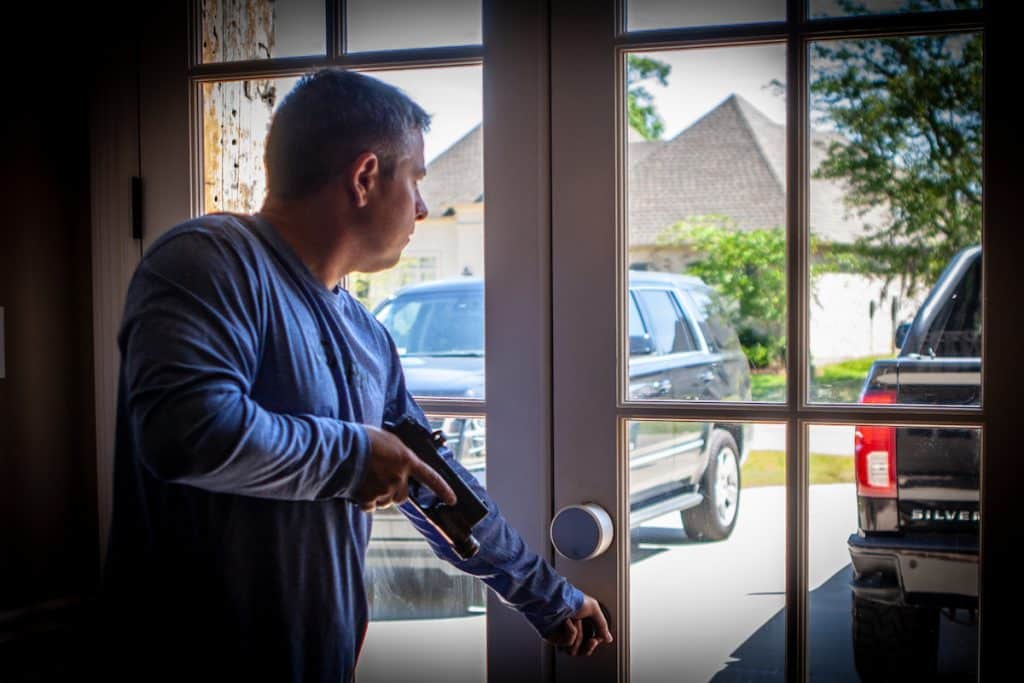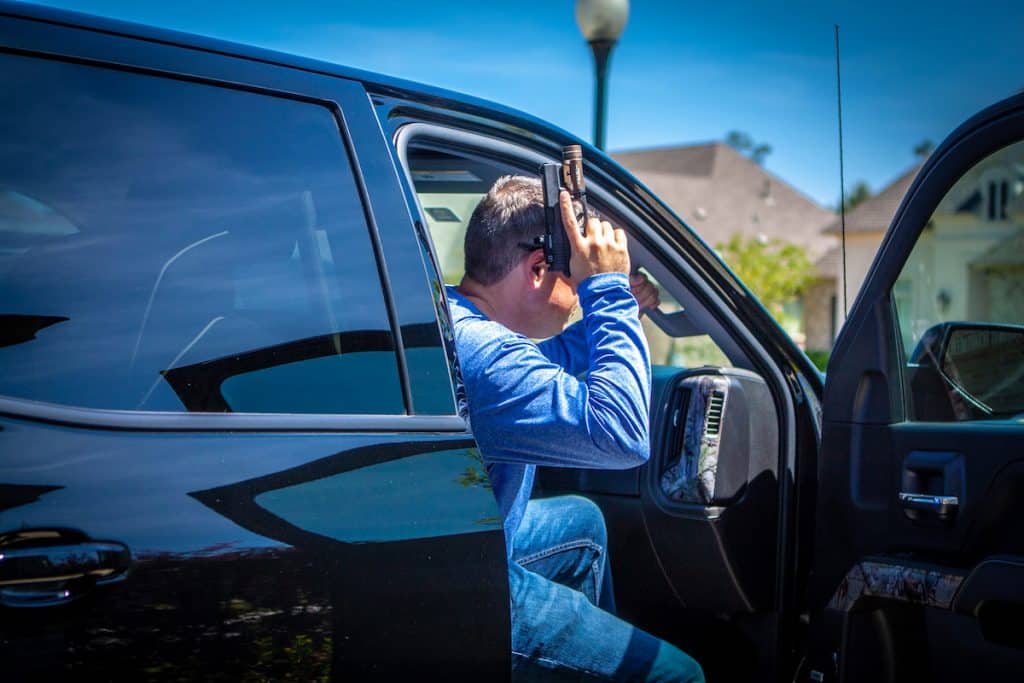Handgun ready positions are a topic surrounded by a lot of kung fu-like mythology. Certain well-known instructors tout many different ready positions for various reasons, and the minutia of each is the source of endless debate. If we strip all of the kung fu away, however, the overall principle is generally simple. There are a number of ready position variants that we need to be comfortable with, but much of the theater can be ignored.
What are Ready Positions?
In general, a ready position is anything that exists between the gun still being in the holster and the gun being pointed at the target. Since muzzle discipline is essential for safety reasons, a variety of ready positions may be necessary for any given situation. When in public around people, where you will not be handling a gun administratively, there are only three places the gun should ever be: in the holster, in a ready position if danger is imminent, or in a firing position if necessary.
Ready positions can be broken down into two general categories: muzzle up, and muzzle down. This is, in itself, a source for endless debate as to which is better. I will make it easy: they are both necessary. A muzzle down position will be the most practical in most likely applications, but not always. Even under dire circumstances muzzle discipline is critical, so if downward is not a safe direction, perhaps you have children hanging on to your legs, for example, then an upward position is needed. In my experience, three general ready positions will cover the vast majority of needs.
Compressed Ready Position
A compressed ready position is the go-to position that you will find you most often utilize any time a loaded gun is out of the holster and in your hand. The handgun will be in your regular firing grip, finger outside of the trigger guard, but rather than having the gun extended to a firing position, the gun is held in closer to the chest area. The compressed ready position is very flexible as it allows you to keep the gun pointed in the general direction in front of you, and it also brings the gun in close so that it is more protected, making harder for someone within contact distance to grab. Typically, muzzle directions will be pointed slightly downward with a compressed ready position for general safety.
Single-Hand Ready Position
In the event that you need to have a loaded handgun drawn and in your hand you obviously may need to do a variety of other tasks. Perhaps you have to open doors, work light switches, or usher another person out of the way. The ability to retain the handgun safely in a single hand is critical here. A position that I find very flexible in this regard is a compressed position that holds the gun in tight to the lower chest, pointed downward. This position proves very versatile, and you can accommodate most situations by adjusting the downward angle of the muzzle.
If you must avoid flagging people who are in close proximity to you, then you can point the muzzle almost completely downward. Be sure that your other hand does not work in front of the muzzle if you are indeed doing other tasks such as opening doors. This is also a great position to use if you must run or move rapidly with a handgun. Running with both hands on the gun in a standard compressed ready position makes you slower and less stable in your gait than does keeping one hand free. A single-hand ready position also allows you to move with the gun in a more secure manner in case you are in a situation where you may get taken by surprise at contact distance. Having both hands on the gun makes it much more susceptible to being taken through a disarm attempt than when having a hand free to fend off an opponent.
Temple Index Ready Position
There are times when the safest direction in which to point an un-holstered gun is directly up. If you need to move among people where there are children underfoot this can be a concern. Also, if you need to exit a vehicle while holding a handgun, any position that points the muzzle downward may sweep your own legs, so an upward direction for the muzzle makes sense.
The upwards muzzle position that is most prevalent today is the temple index. This position entails the placement of the hand, typically the thumb of the gun hand, being placed against the temple. This puts the muzzle safely above the head. At first glance, this seems like an awkward and even unsafe place to hold the gun. However, the temple index has several advantages. First of all, the tactile placement of the gun hand against the temple gives you a sense of where the gun is in reference to your body. This proves useful under stress or during dynamic movement. Second, this places the gun in a position that does not obstruct your vision. While temple index may be less often needed than other ready positions, it serves a purpose. Getting comfortable with it can be useful.
While seemingly simple, being comfortable with ready positions requires some practice and familiarization. A loaded handgun is, obviously, dangerous. Muzzle discipline must be maintained at all times no matter how fast-moving or critical the situation. Get used to these positions safely with dry practice and add them to your skill set.












